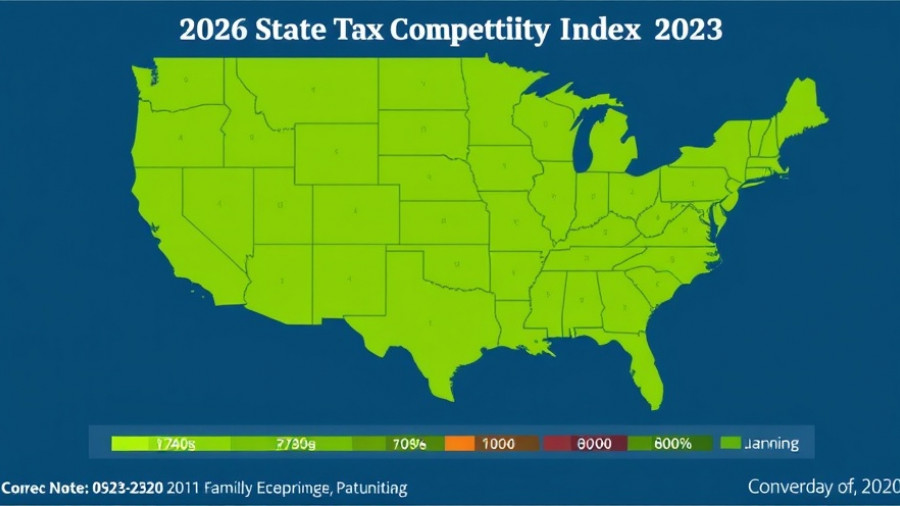
Your State's Tax Future: Insights from the 2026 Tax Competitiveness Index
The recently released 2026 State Tax Competitiveness Index offers a comprehensive overview of how various state tax systems perform compared to one another. This year’s edition, building upon two decades of assessments, represents a refined methodology that now evaluates states not just on business tax climates but overall tax competitiveness.
Understanding the Rankings
At the top of this year’s index is Wyoming, closely followed by South Dakota and New Hampshire. These states have effectively structured their tax systems, often by forgoing one or more major taxes, like individual income tax or corporate tax—which contributes to their strong performance. For instance, both Wyoming and South Dakota do not levy an individual income tax, providing them with a competitive edge that significantly attracts businesses and fosters economic growth.
On the other end of the spectrum, states like New Jersey, California, and New York consistently rank at the bottom due to higher tax burdens and more complex tax structures. High property taxes, multiple tax brackets, and stringent regulations compound these states' difficulties in attracting new business investments.
The Importance of Methodology
This version of the Index boosts transparency by integrating over 150 variables across five main tax categories: corporate taxes, individual income taxes, sales taxes, property taxes, and unemployment insurance taxes. Notably, this year the Tax Foundation backcasted the rankings for six years, better reflecting the effects of recent changes in tax policy.
Changes such as the elimination of the individual income tax in New Hampshire have improved its position significantly, illustrating how state tax reforms can lead to changes in overall competitiveness. Readers and policymakers are encouraged to utilize the interactive features of the Index to compare states, assess specific tax types, and explore potential reforms relevant to their needs.
The Future of State Tax Policy
As lawmakers begin to examine their state’s rankings, it may be a catalyst for discussions about tax reforms. Policymakers should heed the Index’s findings as a roadmap for improvement. For instance, states that have maintained strong tax structures despite lower revenues can offer valuable lessons in strategic tax policies that encourage economic vibrancy.
As we navigate through these fiscal landscapes, it’s crucial to remember that tax systems have far-reaching impacts on local communities and businesses. Thus, engaging with these findings can lead to actionable insights that may further enhance economic opportunities for residents.
Conclusion
As taxpayers, business leaders, and policymakers, understanding tax competitiveness is crucial for fostering an economic environment conducive to growth and improvement. This year’s Index provides an essential framework for evaluating and reforming state tax structures. If you’re interested in how your state ranks and the strategies it can adopt, dive into the interactive **State Tax Competitiveness Index** for more insights!
 Add Row
Add Row  Add
Add 

 Add Row
Add Row  Add
Add 



Write A Comment